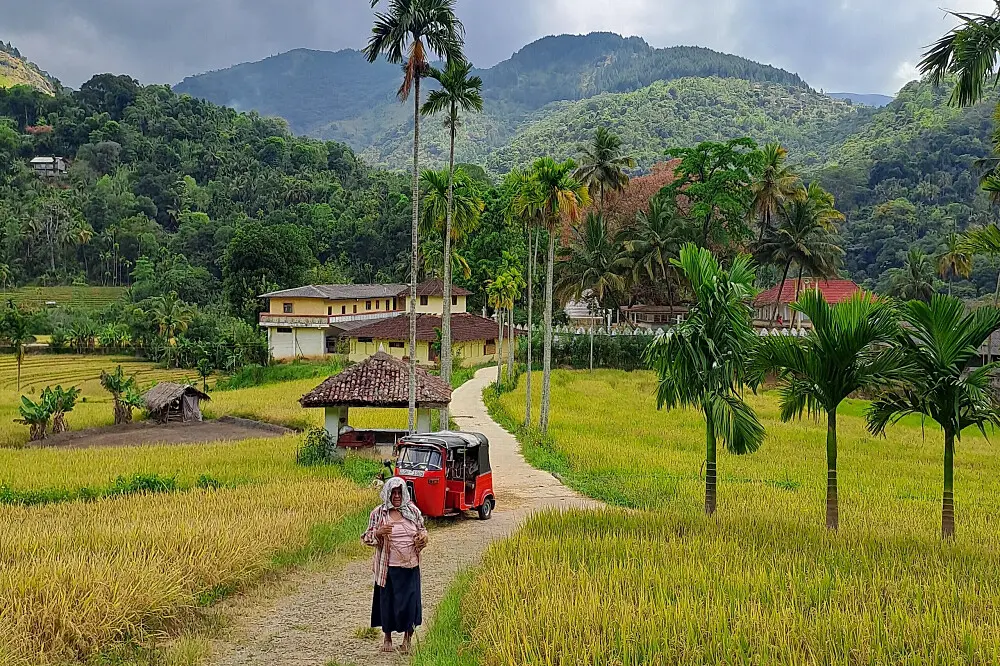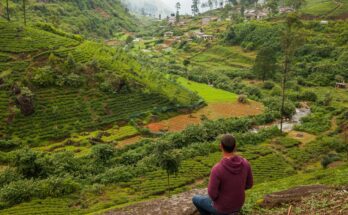Sri Lanka, a paradise of pristine beaches, lush forests, and ancient cultural sites, offers a treasure trove of experiences for any traveler. While many flock to the coastal resorts or historic cities, one of the most authentic ways to experience the island is by immersing yourself in its rural villages. The charm of village life in Sri Lanka is unparalleled, offering travelers a glimpse into the heart of the country’s traditional ways of living. In these villagers, time slows down, and visitors can enjoy the simplicity, warmth, and hospitality of the locals while experiencing daily life that has remained largely unchanged for generations.
Exploring the Hill Country Villages
The hill country of Sri Lanka is home to some of the island’s most picturesque villages. Nestled among the mist-covered mountains, these rural areas offer a peaceful retreat from the hustle and bustle of urban life. Villages such as Ella, Haputale, and Nuwara Eliya are popular for their breathtaking landscapes, tea plantations, and cool climate. Visitors to these areas can stay in cozy homestays where they can enjoy home-cooked meals made from fresh, locally grown produce.
In these hill country villages, tea is more than just a beverage; it’s a way of life. Visitors can take guided tours of the tea estates, where they can learn about the intricate process of tea production, from plucking the leaves to the final product. Watching the tea pickers work in the sprawling estates is a fascinating experience, as it gives insight into the hard work that goes into producing the world-famous Ceylon tea. Many of these villages also offer visitors the opportunity to try their hand at traditional tea-picking or participate in community-based sustainability projects.
The Heart of Sri Lanka Culture : Village Traditions and Festivals
Sri Lankan village life is deeply rooted in tradition. The simplicity of rural life is reflected in the daily routines, which revolve around agriculture, family, and community. Farming is the backbone of most rural villages, with locals cultivating crops such as paddy, coconut, spices, and vegetables. These farming practices are passed down through generations, and visitors can often join local farmers for a day to learn about organic farming methods and rural labor techniques.
The significance of festivals and cultural practices in rural villages is also noteworthy. Many villagers celebrate traditional Sinhala and Tamil New Year in April, where the community comes together to share food, games, and cultural performances. The villagers also celebrate religious festivals such as Vesak, honoring the birth, enlightenment, and death, with beautifully lit temples and processions. For visitors, participating in these festivals provides a chance to witness Sri Lanka’s rich cultural heritage firsthand.
Traditional Handicrafts and Local Art
Another aspect of rural village life that draws travelers is the opportunity to explore traditional handicrafts and local art. Sri Lankan villages are home to skilled artisans who create a variety of items, from batik fabric and wood carvings to clay pottery. In villages like Puttalam, Kandy, and Galle, travelers can visit local workshops and learn about the intricate processes behind these traditional crafts.
One such craft that has gained attention is Sri Lankan pottery, made using techniques that have been handed down for centuries. Visitors can get involved in the process of creating their own pottery pieces, which makes for a memorable souvenir from their trip. These handicrafts are not just decorative but represent the island’s long-standing cultural identity, making them valuable mementos for anyone visiting the villages.
Fishing Villages: A Different Pace of Life
Sri Lanka’s coastal villages offer a completely different experience, with fishing being the primary livelihood for many of the island’s rural communities. Villages like Negombo, Mirissa, and Trincomalee provide a rare chance to witness traditional fishing methods such as troll fishing and net casting. Visitors can join the local fishermen on early morning excursions, where they learn how fish is caught, dried, and prepared for sale in the local markets.
Staying in these coastal villages allows travelers to enjoy the peaceful rhythms of village life while relishing the freshest seafood. These villagers are also perfect for those interested in eco-tourism, as many offer sustainable fishing practices that protect the local marine ecosystem.
Village Homestays: A Warm Welcome into Local Life
One of the best ways to experience Sri Lankan village life is by staying a local family. Homestays offer an authentic experience, where travelers can become part of the family for a few days. Visitors can enjoy meals prepared from home-grown ingredients, participate in household chores like rice harvesting, or even learn traditional cooking techniques. The hospitality of the villagers is unmatched, and visitors often leave with not only new knowledge of rural life but also lasting friendships.
Conclusion
Sri Lanka’s rural villages offer an enriching travel experience that goes beyond the ordinary. Whether you’re exploring the cool hills of the central highlands, participating in age-old agricultural practices, or enjoying the hospitality of a fishing village, the island’s villages provide a glimpse into the authentic Sri Lanka. For travelers seeking an intimate connection with the local culture, rural tourism is an opportunity to discover the heart of the island, offering not just a vacation, but an unforgettable journey into Sri Lanka’s traditional way of life.



